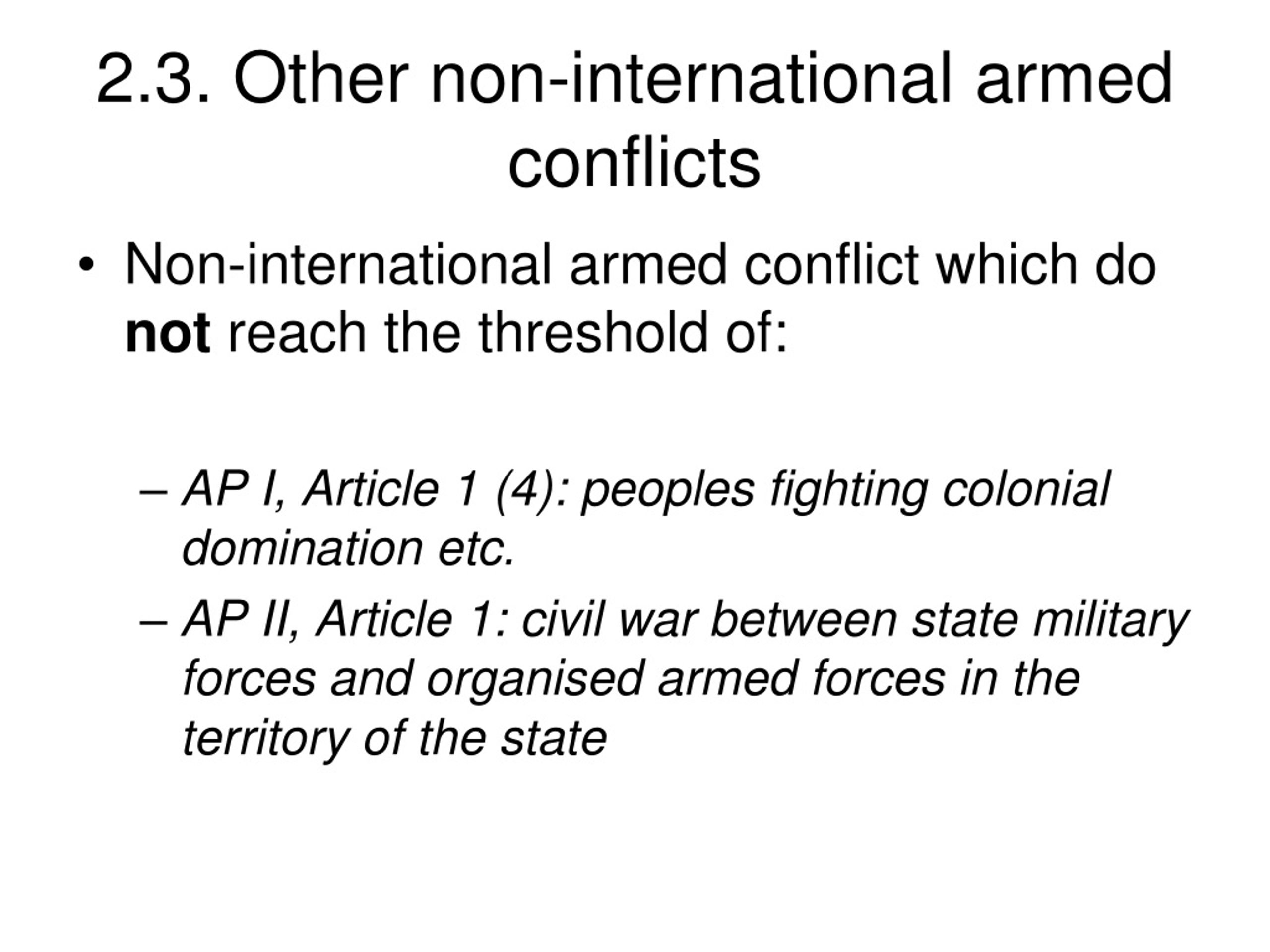

In 1977 the Geneva Conventions of 1949 were supplemented by two protocols, which operate a clear distinction between international armed conflict (Additional Protocol I) and NIAC (Additional Protocol II or AP II). Article 3 of each of the four Geneva Conventions introduces NIAC as “armed conflict not of an international character,” the victims of which must be subjected to the minimum standards of protection. The latter codify a corpus of customary rules, commonly known as jus in bello, which regulate the conduct of hostilities in the context of armed conflict by restraining the use by the warring parties of certain means and methods of warfare. However, this stance has evolved following the adoption of the four Geneva Conventions in 1949.

International law has, for a long period of time, considered NIAC as a purely intrastate matter despite its external reverberations.

Conflicts since the late 20th century in Cambodia, the former Yugoslavia, and Rwanda, as well as the ongoing ones in the Democratic Republic of the Congo, Libya, Yemen, Ukraine, and Syria, are just a few illustrations of the pervasive character of NIACs. NIACs constitute the oldest form of armed conflicts and have become, since the end of the Cold War, more pervasive and more lethal than international armed conflicts. It is also often called “internal armed conflict,” as opposed to an international armed conflict involving at least two states. A noninternational armed conflict (NIAC) or civil war-as it used to be called in the past-is an armed conflict that occurs within the territory of a particular state, between government armed forces and organized armed groups, or between such groups fighting each other.


 0 kommentar(er)
0 kommentar(er)
